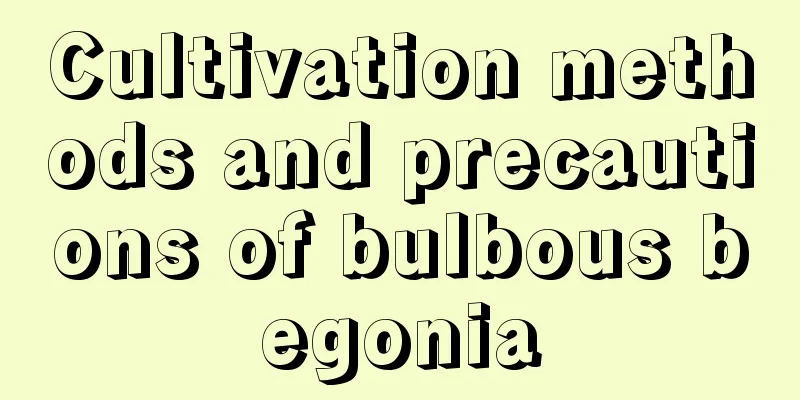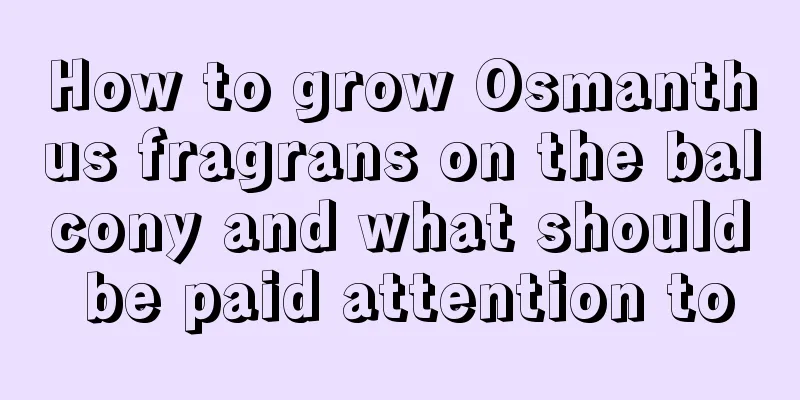Cultivation methods and precautions of bulbous begonia

Farming methodssoilTo grow bulbous begonias, the soil needs to be fertile, loose and breathable, rich in humus, and can be acidic. Generally, you can use garden soil, river sand, and leaf mold. In order to increase the fertility, you can add some base fertilizer. Light and temperatureBulbous begonias prefer a warm growing environment, preferably semi-shade, and are more afraid of the scorching heat of summer. The suitable temperature for growth is between 16℃ and 21℃, and it is not cold-resistant. Basically, if the temperature exceeds 30℃, the stems and leaves may wither, and in severe cases, the underground stems may die. A certain temperature must be maintained in winter, and the temperature for wintering should not be lower than 10℃. Bulbous begonias need long-day conditions to bloom well. Sufficient light needs to be maintained in the summer, but care should be taken to avoid direct sunlight in the summer and provide shade in time. The daylight hours are shorter in the winter, so sufficient light needs to be ensured. Watering and fertilizingBulbous begonia likes water and fertilizer, and requires a moist growing environment, but there should be no stagnant water because it is afraid of waterlogging. Watering needs to be reduced during the budding and flowering stages of bulbous begonias. In summer, you need to increase the air humidity by spraying water. In autumn and winter, the bulbous begonia gradually enters a dormant period, so watering should be reduced. Fertilization needs to be applied thinly and frequently. During the growth period, some decomposed thin fertilizer water can be applied every 10 minutes. During the flowering period, some fertilizers need to be applied to promote flowering. Note that no fertilization is required during summer and winter. PrecautionsReproduction methodThe main methods of propagation of bulbous begonia are sowing, cutting and cutting tubers. Seed propagation can be done in spring or autumn, and cuttings are mainly done in late spring and early summer. Pests and diseasesBulbous begonias need to be prevented from diseases and pests. The main diseases include root rot and stem rot, and the main pests are thrips, aphids and leaf rollers. It is necessary to improve the growth environment of bulbous begonias and spray pesticides in time. |
<<: Cultivation methods and precautions of Aquilegia
>>: Cultivation methods and precautions of Aralia ovata
Recommend
Aloe cutting method
Aloe is a herbaceous plant of the Liliaceae famil...
Cultivation methods and precautions of black leaf Guanyin lotus
Black-leaf Alocasia is a relatively easy-to-grow ...
Why are the leaves of Chlorophytum turning yellow?
1. Too much light It is a semi-shade plant and ca...
Cultivation methods and precautions of peony
The peony vine is a perennial climbing herb, also...
Super cutting method for Pothos gardenia, 100% survival!
If the green radish doesn’t survive after being p...
These flowers can eat mosquitoes, so you don't have to worry about being bitten in the summer, and you don't even need to buy mosquito coils
Sarracenia Pitcher plant is not a pitcher plant. ...
How to grow cactus
1. Loose soil in the pot If you want the cactus t...
For hydroponic flowers, change the water without washing the roots? No wonder the more I change the flowers, the more they die!
Lucky Bamboo Pre-rooting care: 1. Before using ta...
How to breed the lucky charm
1. Division propagation After this plant blooms, ...
Can walnut shells be used as flower soil? How to process walnut shells for planting flowers
Can walnut shells be used as flower soil? Walnut ...
When is the season when apples ripen?
1. Maturity Time Apples mostly ripen in autumn. T...
Can I use old soil to replace the soil of Clivia? Do I need to water it after changing it?
1. Old soil can be used When changing the soil fo...
What to do if smooth sailing withers
1. Hydration and Moisturizing Reason: If you don&...
Can you grow succulents on coal slag?
Can you grow succulents on coal slag? Succulents ...
How to make the leaves of the fortune tree greener and greener (how to make the leaves green and lush)
How to make the leaves of the money tree greener?...









